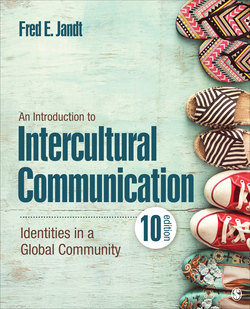Читать книгу An Introduction to Intercultural Communication - Fred E. Jandt - Страница 84
На сайте Литреса книга снята с продажи.
Negative Effects on Communication
ОглавлениеStereotypes are harmful because they impede communication in at least four ways:
1 They cause us to assume that a widely held belief is true when it may not be. Research conducted by Gordon Allport (1954) showed, for example, that the prevalent stereotype of Armenians as dishonest was proved false when a credit-reporting association gave the group credit ratings as good as those given others. Although you may think of stereotypes as being negative judgments, they can be positive as well. Some people hold positive stereotypes of other individuals based on their professional group membership. For example, some people assume that all doctors are intelligent and wise.
2 Continued use of the stereotype reinforces the belief. Stereotypes of women as ornaments, people of color as stupid or licentious, and gay men as promiscuous reinforce a belief that places individual women, people of color, and gay men at risk. Popular television may reinforce those stereotypes. Shaheen (1984), for example, has cited the four Western myths about Arabs as shown on television: Arabs are wealthy, barbaric, sex maniacs, and terrorist minded.
3 Stereotypes also impede communication when they cause us to assume that a widely held belief is true of any one individual. For example, if a group is stereotyped as dishonest, that does not mean that any one individual in that group is dishonest. A classic psychology study in the 1970s had two groups of undergraduates read stories about a woman. The stories were identical, except that one had the sentence “Betty is now a lesbian.” On a test one week later, individuals in the group who had read that Betty is a lesbian were much more likely than individuals in the other group to recall having read that Betty never dated men. In fact, the story that both groups had read stated that Betty dated men occasionally. The group’s stereotype of a lesbian influenced what they recalled having read (Snyder & Uranowitz, 1978). Do you think that stereotype is commonly held today?
The stereotype can become a self-fulfilling prophecy for the person stereotyped. Research by psychologists Steele and Aronson (1995) has shown that a negative stereotype creates a threat that can distract the individual stereotyped and lower performance.
Hamilton and Harwood (1997) note that while cultural differences may be the most visible among people, they may not be the differences most likely to cause conflict. The authors warn against treating people as members of a cultural group without recognizing their individuality and other identities that might be important to them.
